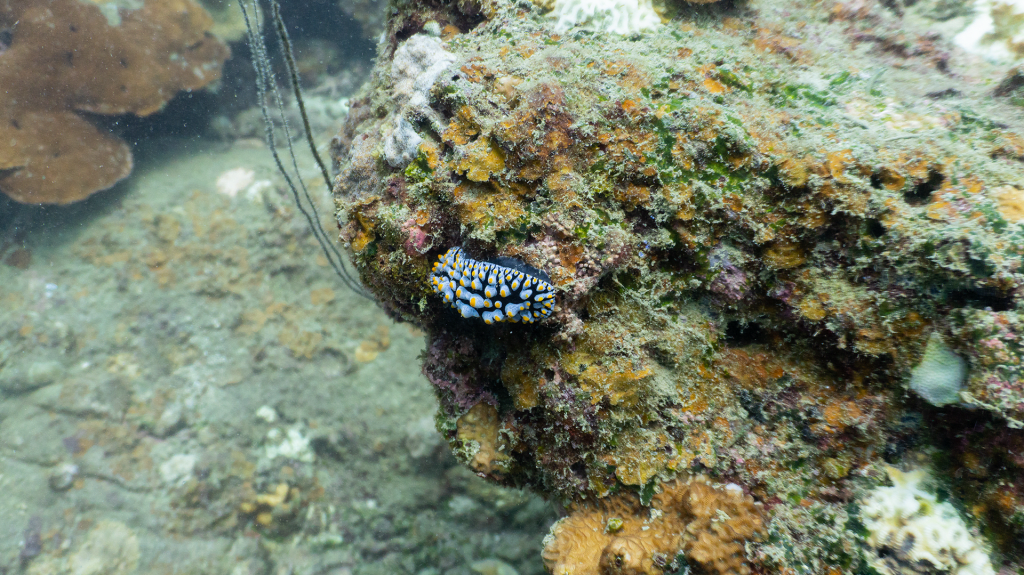Phyllidia varicosa

The varicose phyllidia (Phyllidia varicosa) is a large and brightly colored sea slug belonging to the dorid nudibranchs. A member of the Phyllidiidae family, it is known for its striking appearance and plays an important role in coral reef ecosystems.
Widely distributed across the Indo-Pacific region, Phyllidia varicosa is found in tropical waters of the Indian Ocean, the western Pacific, and the Red Sea. It inhabits coral reefs and rocky underwater areas, often crawling over sponges, which form the basis of its diet. By consuming sponges along with their toxins, this nudibranch becomes poisonous, providing it with protection from predators.
Beyond its wide range, Phyllidia varicosa is also notable for its size. While the average length is 8–10 cm, some individuals can grow up to 12 cm.

This species has an elongated oval body covered with distinctive longitudinal ridges, making it easily recognizable. The ridges and tubercle bases are grayish-blue or blue, while the tubercle tops are bright yellow. The ridges can be continuous or broken, with black spaces in between. The edges of the mantle feature semicircular ridges with yellow tubercles. The rhinophores (sensory organs) are bright yellow, and the foot sole has a black longitudinal stripe.
These nudibranchs are usually solitary but sometimes gather in small groups. Occasionally, multiple individuals can be seen together, likely during reproduction. Phyllidia varicosa is well-protected from predators thanks to its ability to secrete toxic substances. Its vivid coloration serves as a warning signal, emphasizing its toxicity and effectively deterring potential attackers.
As a hermaphrodite, each individual possesses both male and female reproductive organs. During mating, they exchange eggs and sperm. The reproductive organs are located on the right side of the front part of the body, requiring the nudibranchs to align side by side for copulation. Eggs are laid on hard surfaces, and the larvae spend some time in plankton before settling and developing into adult nudibranchs.
This species not only adds beauty to the underwater world but also plays a vital ecological role by regulating sponge populations and contributing to the health of coral reef ecosystems.
